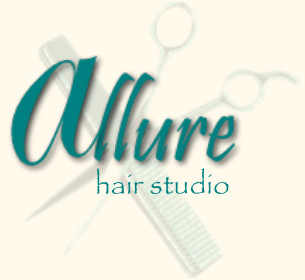





|
You and I both know that some people color their own hair, and that they experience moderate success. There are many “over-the-counter” products available and most of them perform to some degree. However, there are many things to consider before undertaking such a complex and potentially disastrous project.
First of all, licensed hairstylists are required to complete many classroom hours of color theory that involve extensive knowledge of primary, secondary, and tertiary colors. We are trained in the use of the “color wheel” and are required to understand how colors interact with each other in the spectrum. Then we must understand how colors behave in the hair. For example, in selecting a product to eliminate “brassiness” in blonde hair, one must be able to accurately determine the “level” to which the hair has been lightened, and then chose a product with the appropriate “base color” to produce the desired result.
|
This can be tricky. Most people would instinctively shy away from a product with a green base color, although green base colors certainly have their uses. But in the case of a “level 9” blonde with yellow tones, one must also be able to identify and rule out the use of any product with a blue base color. Why? Because yellow and blue make… green . |
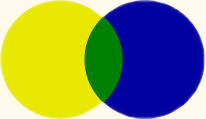 |
Secondly, it should not come as a surprise to anyone that professional products, including hair color, are held to significantly higher standards than those made available to the general public. This not only includes areas of performance, such as durability and color accuracy, but also involves the harshness of the chemicals used to effect changes in the hair. |
There are three layers of the hair, the outermost of which is called the “cuticle”. The cuticle is comprised of millions of overlapping scales, much like the scales of a fish. All chemical products work in the “cortex” layer of the hair, thus are required to penetrate the cuticle. This is accomplished by “flaring” the cuticle scales to allow passage of tiny molecules. |
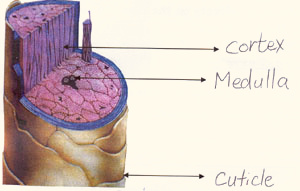 |
However, once cuticle scales are flared, they never completely return to their original flat configuration. Overly harsh products cause excessive damage to the cuticle layer, and over time, the result is loss of shine, elasticity, and eventually, even the ability to retain additional color molecules. |
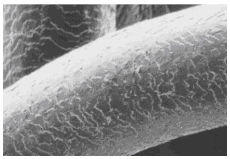 |
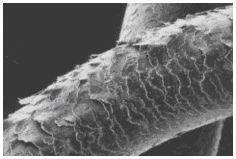 |
| Not to mention a gazillion split ends. |
|
Thirdly, and certainly not the least important, is this simple truth: if your home efforts give you less than satisfactory results, professional color correction is expensive. This is because of the high degree of skill and vast amounts of time it sometimes takes to fix what was accomplished in fifteen minutes in someone’s kitchen sink. Remember this: color will not remove color. If your result is too dark, you have three options. You can cut it off, deal with it until it grows out, or pay a professional to apply “color remover” and run the risk of damaging your hair beyond repair. If your result is too light, especially if the hair has been over-processed, so much of the hair’s natural pigmentation might be missing from the cortex that it will be impossible to get a desirable result without the use of some type of “color filler”. Conversely, if the result is uneven, different techniques will be required for different areas of the hair, and this can get complicated. In other words, it will cost you.
I take great pride in the years of experience I’ve gained working with haircolor and all the innovative techniques I’ve mastered. Yet the more I’ve learned, the more I’ve understood that haircolor is not an exact science. There are always variables that can affect the outcome—hormones, product buildup, product oxidation, genetics. Even in the most carefully controlled environments, haircolor can be capricious.
I’m not trying to scare you away from home hair care products…but then again, maybe I am. My best advice on this subject is to avoid the lure of any do-it-yourself haircolor project. If you’ve been coloring your hair at home for years with a tried-and-true product and have consistently gotten good results, there is little I can say to discourage the practice. Otherwise, I strongly recommend that, when it comes to haircolor, you consult with and follow the advice of a licensed hair care professional. |
|
|
